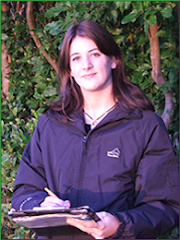

Seconds after leaving the car, I hear a sound, a strange blend of a lion’s roar and a cow’s moo. I recognise it from dozens of wildlife TV programmes; it is the bellow of a red deer stag. Sensing that it must be just the other side of the hedge, I hurry on. From the gate, with the moor rising up behind me and wooded valleys snaking to the distant grey sea below, I see him. He holds his head forwards on an outstretched neck, mouth open, with white froth at his lips and spectacular, multi-tined antlers. The stag momentarily acknowledges my presence, but then returns his attention to another stag, which is standing a few hundred metres away. There isn’t a breath of wind, but tension ripples the air like static. A hind barks. The first stag starts to trot towards the second, which also breaks into a run. I wonder if there will be a fight, which only happens if the males are so evenly matched that victory cannot be determined by any other way. The contest is a serious one, as only the dominant stag will mate and sire offspring, but a fight is the last resort, as it can lead to injury and even death. The pair close in and it looks as though they will meet head-on, but, instead, they run straight past each other and the second stag gallops away down the hill. Perhaps he has seen enough to know that he can’t win.

Lifting his head to the sky, the victorious stag bellows again and the sound echoes around the moor. He is answered by belling from the opposite side of the valley and I lift my binoculars to spot the calling stag. Another stag roars behind me, higher on the hill. In this natural arena, I am surrounded by some of Exmoor’s 3000 red deer and swept up in their drama, which has been played out here since pre-historic times.
The stag rounds up a few hinds and herds them back towards his own waiting females. Then, the whole group melts into the bracken. Eager to see more, I drop down into the woodland edge and conceal myself amongst some pine trees. In a clearing, a hind twitches her huge, grey, furry ears, listening. A stag, bleeding from the mouth, joins her. I wonder if it is the stag that fled earlier, or if it is a different animal. A fox snuffles past, but the deer are more interested in whatever is thrashing around, unseen, in the undergrowth. They scurry away, to hide in the wood and I trek back up the hill, as the sun turns everything to gold and Exmoor becomes quiet once more.
Now you do it
Scotland is the obvious place to head if you would like to watch the red deer rut, but there are smaller populations throughout the UK, including Exmoor and the Quantocks, New Forest, as well as various deer parks. Countryfile provides a list of places to see rutting red (and fallow) deer and the Forestry Commission lists places that red deer can be found.

You can join rangers and safari tours to see red deer, but I think that there is something special about going it alone. There is such a sense of achievement in using your field skills to first find the right place to watch and secondly creeping close without disturbing the deer. At this time of year, red deer are conspicuous at dawn and dusk. For information on how to identify red deer and their field signs, check out the New Forest Gateway and the Environmental Records Centre for Cornwall and the Isles of Scilly websites.
The rut lasts from October to November, so get out there straight away if you want to catch it this year!


